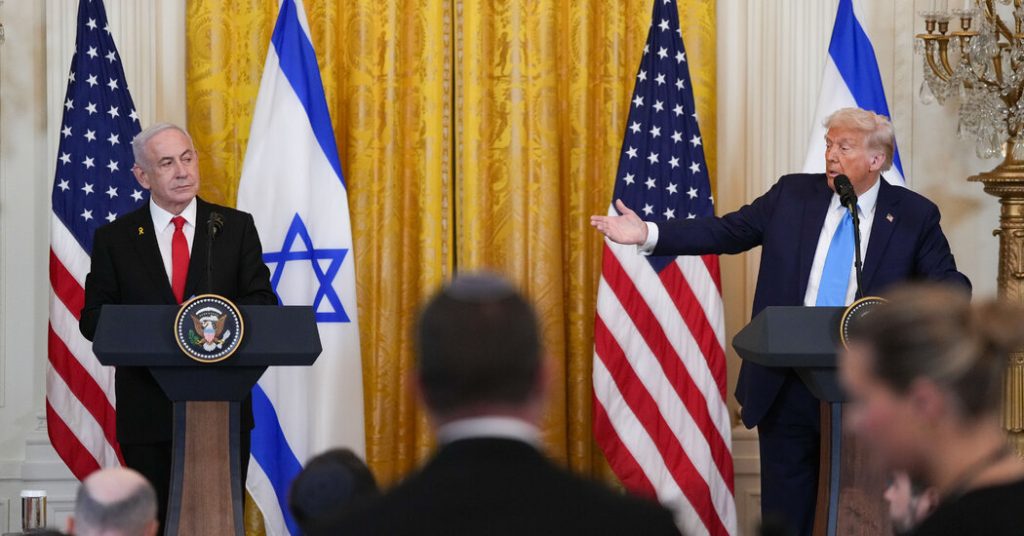President Trump’s unexpected proposal to have the United States take control of Gaza and relocate its Palestinian population sparked immediate controversy and raised numerous logistical and legal questions. Trump presented this plan during a White House press conference with Israeli Prime Minister Benjamin Netanyahu, framing it as a humanitarian effort to provide a better life for Palestinians displaced by the recent conflict with Israel. This proposal represents a radical departure from decades of U.S. foreign policy supporting a two-state solution. Trump envisioned a “magnificent” redevelopment of Gaza, creating jobs and transforming it into a desirable location. However, he offered no concrete details on how this takeover would be achieved, how the relocation of approximately two million Palestinians would be managed, or what legal basis existed for such an action. The forced displacement of a population is considered a violation of international law, a point not addressed by the President.
The timing of Trump’s announcement, amidst fragile cease-fire negotiations between Israel and Hamas, further complicated the situation. These negotiations aimed to end the fighting and secure the release of hostages held in Gaza. Hamas has consistently asserted its intention to remain in control of Gaza, a position directly opposed by the United States. Trump’s proposal escalated this stance beyond simply opposing Hamas rule to outright advocating for U.S. territorial control. The potential impact of this announcement on the already delicate negotiations remained uncertain, adding another layer of complexity to the conflict. Furthermore, Trump’s assertion that Egypt and Jordan would accept the relocated Palestinians contradicted prior statements from these nations, raising doubts about the feasibility of the plan.
Trump’s vision for Gaza lacked critical details regarding its execution. He did not specify how the takeover would be enforced, whether military intervention would be necessary, how the Palestinian population would be moved against their will, or who would bear the financial burden of his proposed reconstruction project. While suggesting other countries would fund the rebuilding of Gaza, he also spoke of “long-term ownership” by the United States without clarifying the extent or legality of such ownership. He claimed that Palestinian residents would welcome the plan due to the devastation of their homes, a statement met with widespread skepticism.
This proposal aligns with Trump’s previously expressed expansionist ambitions, including suggestions of acquiring Greenland, regaining control of the Panama Canal, and annexing Canada. These pronouncements have all faced significant resistance, and the Gaza proposal predictably generated even greater controversy. Observers noted the “shock and awe” nature of this approach, mirroring his other disruptive actions during his second term. Trump’s approach seemingly aimed to drastically reshape existing geopolitical structures, with the Gaza proposal being a stark example of this disruptive strategy.
The international community and legal experts expressed strong concerns about the legality and ethical implications of forcibly relocating a population. Such actions would likely be considered a violation of international law and human rights principles. The plan’s lack of detail regarding logistical implementation, funding, and legal justification further fueled skepticism and criticism. Many questioned the practicality and morality of displacing two million people, expressing concerns about the potential for further instability and humanitarian crisis. The long-term consequences of such a move on regional stability and international relations remained a significant concern.
Prime Minister Netanyahu’s presence during the announcement and his remark that Trump “sees things others refuse to see” suggested a degree of support for the proposal. However, the overall international response was largely negative, with many expressing alarm at the potential consequences of such a drastic shift in U.S. policy. The proposal’s implications for the ongoing Israeli-Palestinian conflict, regional stability, and international law remained subjects of intense debate and concern. The lack of clarity on how such a plan would be implemented further contributed to the uncertainty and anxiety surrounding this unexpected development.









